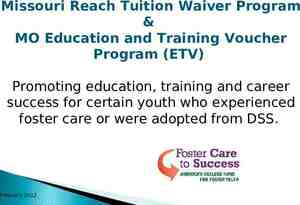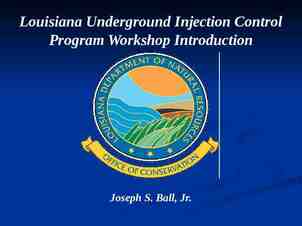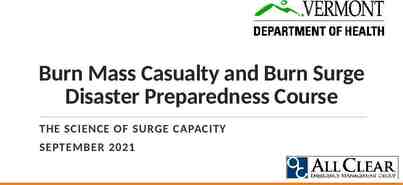Business Analysis Skills & Competencies Ken Fulmer April 3, 2018
23 Slides7.04 MB

Business Analysis Skills & Competencies Ken Fulmer April 3, 2018

BABOK 3.0 - Competency Model v4 2

The Business Analyst of the Future The business analyst of tomorrow brings more than a business or systems perspective, they represent the customer and connect solutions to their needs. BIG-PICTURE MINDED Holistic Solutions CUSTOMER FOCUSED Understands the business customer TECH SAVVY Understands the application of technology EMPATHETIC With the customer SKILLS STRATEGIC Examine the business model FLEXIBLE In the techniques that are used and artifacts produced COLLABORATIVE Engages all stakeholders INNOVATIVE Within the enterprise 3

Digital BA “hard” skills 1 Understand Strategic Imperatives 7 2 Customer Experience Understand Technology FOLLOW BA BEST PRACTICES 6 3 Reimagine Business Processes Drive Evidence/ / Data Based Decisions 5 4 Continuous Stakeholder Collaboration Embrace Agility 4

1 - Understand Strategic Imperatives Understanding the ‘big picture’ STRATEGIC SKILLS Business Agility Competitive Analysis Strategic Analysis Strategic Leadership Organizational Change Value Realization Understanding of Business Agility as a Strategy Sustainable competitive advantage Strategy at all levels (enterprise, function, project/program) Strategy to Execution – key to deliver value 5

2- Customer Experience Think from the customer perspective (“outside-in”) Analyze Customer Journey and Map all journeys Assess the full cycle of that customer product/service and all partners in the supply chain needed – stakeholders can cross enterprises – and often do. When appropriate – be the proxy for the product owner and be focused on the overall set of avatars/personas that are the customer (story of Malcolm Gladwell and Spaghetti Sauce) When appropriate – be the “Voice of the Customer” 6

3- Business Process Re-imagine the Business Process Front Office – tie to customer experience Mid and Back Office - Process integration Leverage the Business Process Management Approach Process Analysis (vs business organization) Process Design Process Performance Measurement Process Transformation & Innovation Consider Enterprise Process Management Level Consider “disruptive” business models 7

4- Embrace Agility The Agile Mindset (not just SCRUM or Kanban methods) - deliver value rapidly and consistently, collaborate courageously, iterate to learn, simplify to avoid waste, consider the context and adapt to realities reflect on feedback and adapt both product and process produce the highest quality products 8

5- Continuous Stakeholder Collaboration Stakeholders – inside and “outside” Understanding personas New mechanism for collaboration Expanded concepts of Elicitation and Collaboration More Data Centric – beyond documented conversations - measurement More than one enterprise is typical The importance of “continuous” Not just a point in time – Leadership of Collaboration and Communication 9

6 - DATA – Evidence Based Decisions BA’s need to use data for analysis Elicitation – survey and experience based Customer Experience Data “Citizen Data Scientist” Level BA’s need to be able to use Data Tools BA’s need to be at the “power user” not developer level for big data and business intelligence use by management BA’s need to be able to create and interpret VISUAL data BA’s need to interrogate data to find rules and requirement and assist in developing algorithms for AI BA’s need to understand data structures and its business uses, and how to exploit digital marketing data 10

7 - Understand Technology Understand how to apply Technology to achieve new business options Understand the Technology as it applies to the industry & disruption Understand the strategic opportunity that Technology can provide New Business Models possible New Business Capability – Business Architecture Innovation and Design options available with new technology Breakthrough Digital Concepts Digital Analytics AI BlockChain Cyber Security Machine Learning Robotic Process Automation SAAS – Cloud delivery – Mobile 11

Digital BA Professiona l “Soft” Skills 12

S1- Infuse Customer Empathy Focus on the Customer Empathy – deep understanding of Customer Experience What the customer sees, thinks, and FEELS Experience across the full customer journey Human touch points – where and how does it impact the customer Minimize touch points with automation (AI) Think about the experience and not just the process!! 13

S2- Envision the Outcome Creativity Seek Unfamiliarity Get feedback from diverse sources Use brainstorming and personal thinking time Understand Design thinking (Stanford ‘d’ school) & other techniques. Innovation as a Process From idea to prototype – filter, experiment, fail, Improvers vs. 1st movers – The Core often hinges on understanding the Customer Value Proposition Focus on that outcome scenario – what is the outcome look like, why is it great? Consider key trends, patterns, changes, and potential obstacles 14

S3- Own the product and the outcome Product vs. Project as a concept (initiative with no specific end) BA’s should own or lead the product & solution (not the project) In Agile this is a role in SCRUM – apply it more broadly to any method BA’s may act as a proxy for the business as owner (slippery approach) Accountability still needs to be with the business – BA is collaborator Outcome Focus MVP product approach from the Lean Thinking (minimally viable product) BUSINESS outcome, not project outcome (time, budget, scope) Experiment with the value of the OUTCOME Mindset of Leadership – ownership for the BA is critical to the profession Create & Seize Opportunities 15

S4- Value Seek and Analyze Value Stakeholder conversations that establish ‘value’ – Probe for Value Define and Prioritize Value options Define value measures across portfolio, programs, projects Business outcomes based on Value (aka – develop the business case) Assist business partners communicate solution value to key stakeholders Based on economic value, and impact of business problems or opportunities Communicate Value Story Telling Benefits in credible business terms – confirmed by the business owners Advocate for Value – not for features or functions Progressive elaboration of value (incrementally) 16

S5 –Enable Smart Decisions Build Decision Framework Faster Decisions are essential to execution speed and Market pace What Decisions – analyze core factors of what has to be decided – Decision Criteria – alternatives and options with impacts Who Decides – establish RACI discussion and governance by issue Consider the Stakeholders and the Human Factors Adapt to the circumstances – remain agile – process feedback (learn) Negotiate for optimal Decisions – collaborate for compromises that work 17

S6 – LEARN Continuously Mindset of Lifetime Learning Many things we know are enduring – Foundational skills Other things we know are changing and are point in time skills Industries are changing, Technology is changing, Professional roles are changing Specialization of skills and breadth of skills are both aspects of future markets Be a Quick Learner Train you mind to learn quickly – accept and embrace change Be willing to be trainable – immerse yourself in new personal career growth Find ways to learn - just in time New learning processes take practice (like a sport) Look to multiple ways to find training and absorb it – multi-modal delivery Be market opportunity driven 18

S7 – Change & Engagement Mindset of Change Management Not project change – organizational Change Examine evolutionary approach to change Change to People, Process, Technology and Data Change from enterprise, business unit, down to work steps Center Change objectives around Value and Customer Experience Engagement Buy-In from Stakeholders Emotional IQ and Stakeholder Empathy Harness Conflict to focus on Value Engage with collaborative Creativity of the Solution Make It Fun – engagement is personal Enable Virtual engagement using technology 19

S8 – Culture & Business Models Enterprise Culture Culture ties to Strategy Objectives – Efficiency & Transformation Focus on Market Awareness – Customer centricity Obsess over Outcomes – be purposeful but tie to that Value and Outcome orientation Enable Innovation New Approaches New Mindsets Support Social Networks Invent new Language where appropriate Streamline the Organization Structure – flatten where possible Business Model Transformation drives a new culture which values innovation over efficiency Customer Value Proposition is primary – understand horizontal segmentation & personas Systems Thinking Mindset – Find Opportunities and Seize the Opportunity 20

Evolving Business Analysis Profession - EXPANDED ROLE HYBRID Business Intelligence Analyst BA / Product Manager Digital BA / Product Owner SPECIALIZED Digital Product Manager Security BA RPA Analyst STRATEGIC Director Marketing Analysis Chief Digital Officer PRACTICE FUNDAMENTALS BUSINESS ACUMEN & TECHNOLOGY FLUENCY DIGITAL MINDSET ADVANCED SKILLS & KNOWLEDGE EXPANDED ROLE

Micro Credentials Specializations Foundational Business Analysis Capabilities (e.g. (e.g. BABOK BABOK V3, V3, Agile Agile Extension Extension V2 V2 . . . )) Understand Strategic Imperatives 1 2 Empathize with real Customer Reimagine Business Processes 3 4 5 6 Embrace Agility Continuous Stakeholder Collaboration Drive Evidence Based Decision Business Domain Expertise FINTECH FINTECH Connected Connected Healthcare Healthcare so on Data Data Science Science AR AR // VR VR Cyber Cyber Security Security Machine Machine Learning Learning Cognitive Cognitive Business Business Analytics Analytics Blockchain Blockchain Artificial Artificial Intelligence Intelligence Robotic Robotic Process Process Automation Automation Internet Internet of of Things Things Understand Technology 7 Technologies Combinations lead to Specializations so on

Career Architecture Specialty area – bundle of specific skills & technical literacy Domain Knowledge – Industry & Function Hybrid Roles – Expanded skills Digital Skills – Hard & Soft Agile Competencies BABOK 3.0 – Competency 23






